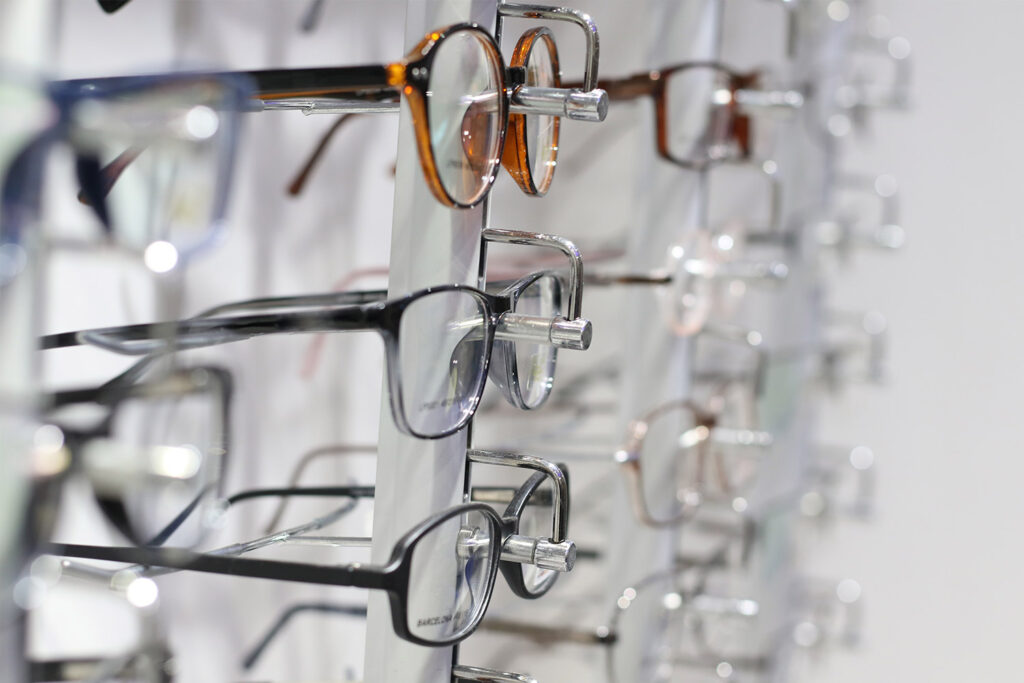Most people having surgery to remove cataracts have been wearing glasses for years by the time their cataracts start to affect vision. Many are well used to glasses by then and ambivalent about wearing them, but an increasing number of people hope to have a degree of independence from glasses.
Before cataract surgery measurements are taken of a patient’s eyes. This is known as ocular biometry. The length of the eye, curvature of the cornea, depth of the front chamber of the eye and width of the cornea are measured, and several formulae are available to translate these measurements into a useful prediction of which intraocular lens (IOL) to implant to give good unaided distance vision. Lens selection takes quite a lot of time, and happens outside the operating theatre. With modern measurements and modern formulae the results of this prediction are very good, but not perfect. The occasional patient will still require glasses for distance, though these days the vast majority of people maintain driving vision after surgery without glasses.
Improving near vision without glasses is the challenge that lens manufacturers and surgeons are continuing to work on, but at present there are 3 main options for people that wish to improve near vision after cataract surgery: “mono-vision”, multifocal IOLs, and newer “Extended depth of focus” IOLs. All have advantages and drawbacks.
“Mono-vision” means implanting one eye with an IOL for distance and the second eye with an IOL for near. The compromise is that if the second eye is sufficiently myopic to read well, depth perception will usually be lost, and if the second eye is only slightly myopic (“mild” or “mini-“ mono-vision) so that depth perception can be preserved, reading glasses will still be needed for small print. Some people find mono-vision intolerable, although mild mono-vision is much better tolerated.
Multifocal IOLs, which have been around in one form or another for many years now, work by incorporating separate discrete optical zones into the lens. Patients with multifocal IOLs “adapt” to use the individual zones separately, with both bi-focal and trifocal options available.The technologies used to achieve the discrete zones differs between lenses, as does the distance at which near vision is clearest. All multifocal IOLs induce some degree of optical side-effects, usually haloes or “starbursts” around lights at night, presumably due to blur from the other focal zones. These effects can be severe enough that some patients choose to have a second operation to remove the lens and replace it with a monofocal IOL. In addition, because the multifocal IOL splits light between distance, intermediate and near zones (or, in the case of bifocal lenses, distance and near), contrast sensitivity suffers. This makes them inappropriate for most patients with optic nerve disease (including glaucoma) or macular disease (including macular degeneration, epiretinal membrane or diabetic maculopathy).
The latest alternative is the new category of “extended depth of focus” (EDOF) IOLs. These use similar technology to the multifocal IOLs, but induce less myopic defocus so that the risk of both reduced contrast sensitivity and bothersome haloes and glare is much less, and the compromise in distance vision is much less than with multifocal IOLs. The compromise is that these IOLs improve intermediate vision (eg reading your phone), but are not a replacement for reading glasses for most people.
IOLs that improve unaided near vision have come a long way, and are constantly evolving. For the right patient, well-informed and motivated, they can offer increased freedom from wearing glasses. They are not for everyone, though, which is why they accounted for less than 2.5% of all IOLs implanted world-wide in 2014.
Glasses after cataract surgery? Read More »


